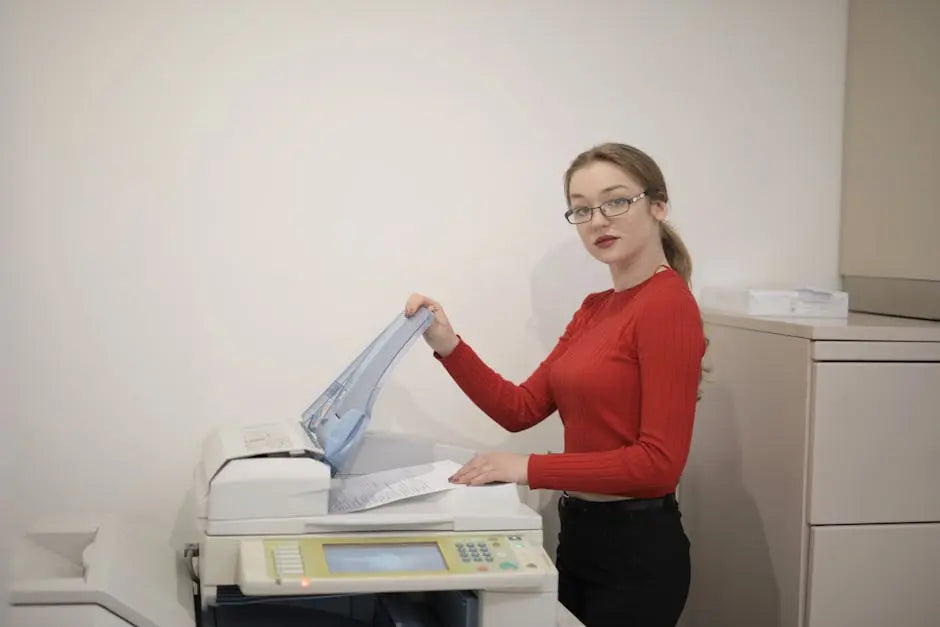
8 Tips for Getting the Most Out of a DTF Near Me Service
Share
In the world of custom printing, DTF services are a game changer, allowing for vibrant designs that adhere beautifully to various fabrics. Whether you’re a business owner looking to promote your brand or an individual wanting to express your creativity, knowing how to navigate a DTF near me service can make all the difference. Here are some handy tips to help you maximize your experience.
1. Understanding DTF Printing Basics
Before diving into a DTF service, it’s essential to grasp what DTF printing is all about. This section explains the process and benefits of DTF printing compared to other methods, setting a solid foundation for your journey.
DTF, or Direct to Film, has become increasingly popular due to its ability to print intricate designs directly onto transfer film, allowing for a vibrant image that easily adheres to fabric. It’s crucial to understand that while DTF offers an ease of use, the quality of the print will heavily depend on the equipment used and the expertise of the provider. By familiarizing yourself with the process, you’ll have a clearer idea of what to expect in terms of quality and longevity.
Moreover, understanding the basics can also help you make informed decisions throughout the process. For instance, knowing that DTF prints typically have a smooth feel can help you choose the right fabric. Ultimately, a little research will pay off when it comes to knowing how to communicate your needs effectively!
2. Choosing the Right DTF Provider
Your first step should be to find a reliable DTF service in your area. This tip covers what to look for in terms of quality, customer service, and reviews.
Start by asking friends or searching online for local providers with positive feedback. Online reviews can paint a helpful picture, revealing not just the quality of work, but also how well they treat their customers. Don’t shy away from checking their portfolio as well; a diverse range of samples indicates a provider capable of handling various needs and styles.
Additionally, consider reaching out directly. A good provider should be responsive to your inquiries and willing to guide you in making decisions. Good communication leads to better outcomes. Ultimately, the right provider can turn your ideas into beautiful DTF prints.
3. Preparing Your Artwork Appropriately
High-quality prints start with well-prepared artwork. This section provides guidelines on file formats, resolutions, and color settings to ensure your design looks stunning.
To begin with, check the recommended file formats for submission. Most DTF services prefer PNG or TIFF files as they maintain transparency and quality. Next, pay close attention to the resolution; a minimum of 300 DPI is ideal for ensuring sharp, clear prints on fabric. It sounds technical, but it simply means your images need to be crisp enough to maintain their quality when printed.
In addition, remember that colors can appear differently when printed compared to what you see on your screen. Opt for CMYK color mode when designing your artwork, as it’s better suited for printing processes. And do not forget to double-check your layout and design; a small detail can go a long way in ensuring your final product is exactly what you envisioned.
4. Learning About Material Choices
Different materials can yield different results. Here, we’ll discuss how the choice of fabric can affect the overall look and feel of your print.
When it comes to materials, the fabric you choose will significantly influence the final output of your DTF print. Cotton, for instance, works exceptionally well, offering a soft texture and excellent ink absorption, while polyester can result in a more vibrant color due to its synthetic nature. Blends of materials may also provide unique outcomes, but take the time to understand how each option might behave.
Moreover, consider the intended use of the printed fabric. If it’s for a promotional item that will be worn frequently, durability should be a priority. On the other hand, a one-time event could allow for more flexibility in your fabric choice. By being aware of these options, you can better communicate your preferences to your DTF provider for the perfect outcome.
5. Understanding Pricing and Turnaround Times
Getting the best value for your investment is key. This section breaks down what affects pricing and how long you should expect the process to take.
Pricing for DTF services can vary widely based on several factors, including the complexity of your design, the type of materials you choose, and the quantity of prints ordered. Generally, larger orders tend to be more cost-effective, so if you’re planning to print multiple items, consider doing it in one go. Additionally, always ask for a detailed quote before proceeding.
Turnaround times can also fluctuate. While many providers can handle small orders relatively quickly, larger quantities or more intricate designs may require additional time. It’s always wise to plan ahead and discuss delivery dates upfront, as this will help you avoid any last-minute surprises. Balancing cost and time will lead you to the most efficient service for your needs.
6. Asking the Right Questions
Communication is crucial in any service industry. Learn what questions to ask your DTF provider to ensure clarity and satisfaction with your order.
One of the best ways to ensure a smooth process is to prepare a list of questions before you meet or communicate with your DTF provider. Questions like, ‘What is your typical turnaround time?’ or ‘Can you provide samples of your work?’ can offer crucial insights into their operations. Don’t hesitate to inquire about their process for quality checks and their policy for reprints if the product doesn’t meet standards.
It’s also beneficial to ask about their expertise with specific fabrics or types of designs. Understanding their experience can provide confidence in their ability to bring your vision to life. The more informed you are, the better equipped you’ll be to make decisions that lead to a satisfying outcome.
7. Proper Care and Maintenance of Your Prints
Once you have your prints, knowing how to care for them is essential for longevity. This section will guide you through washing, drying, and storing your DTF prints.
Taking care of your DTF prints can significantly extend their lifespan. Start with washing; it’s generally advised to turn prints inside out and wash them in cold water to preserve colors and prevent fading. Avoid bleach and harsh detergents, as these can damage the print over time. When it comes to drying, opting for air drying is preferred. If you must use a dryer, select a low temperature to avoid any heat damage.
Additionally, store your prints in a cool, dry place, away from direct sunlight. This simple step helps prevent deterioration, keeping your designs vibrant and intact for a longer time. Cultivating these care habits will ensure you enjoy your prints for years to come.
8. Exploring Additional Services Offered
Many DTF providers offer more than just prints. Discovering additional services like design assistance or bulk ordering can enhance your experience.
While you search for a DTF service, keep an eye out for those that also offer design support. If graphic design isn’t your strong suit, having a professional to assist you can make a world of difference. They can help you optimize your artwork for better print quality or even create something fresh and exciting based on your ideas.
Furthermore, some providers may offer benefits for bulk orders, such as discounts or free shipping, which can be a great way to save money if you plan to print multiple items. Inquiring about these additional services can provide you with a more comprehensive experience and ensure you get the most out of your DTF service.

